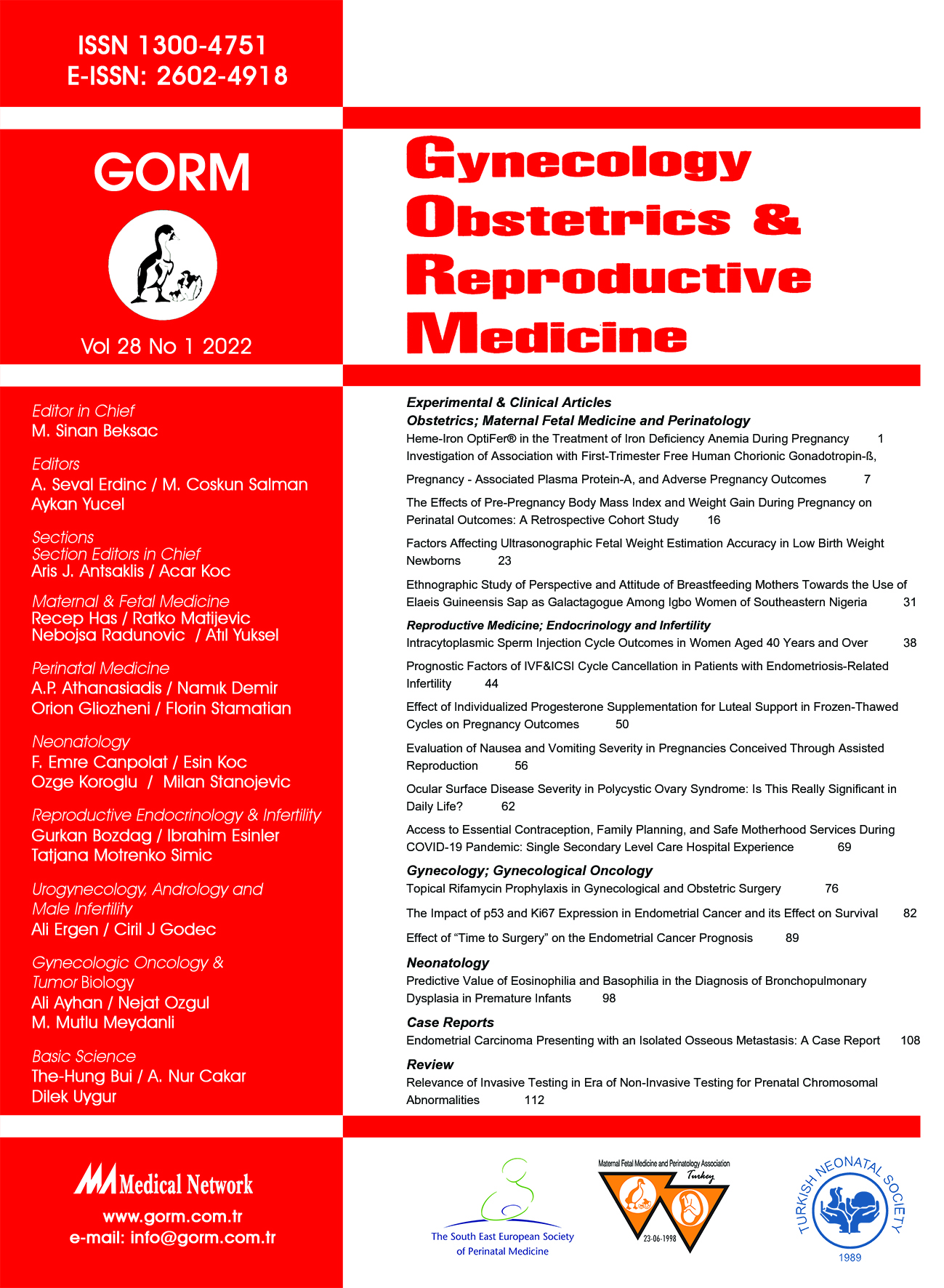Ocular Surface Disease Severity in Polycystic Ovary Syndrome: is This Really Significant in Daily Life?
DOI:
https://doi.org/10.21613/GORM.2021.1173Keywords:
Ocular surface, Meibomian gland, Polycystic ovary syndrome, Tear osmolarityAbstract
OBJECTIVE: The purpose of this study was to ascertain the extent to which the ocular surface of women with polycystic ovary syndrome is impacted.
STUDY DESIGN: Included in this case-control study were 23 eyes of 23 patients (Group I) with polycystic ovary syndrome and 10 eyes of 10 healthy subjects (Group II). Polycystic ovary syndrome was diagnosed when two of the following conditions were met: oligo- or anovulation, clinical and/or biochemical signs of hyperandrogenism, and ultrasonographic documentation of polycystic ovaries. Ocular surface disease grading was performed using the Ocular Surface Disease Index questionnaire, slit lamp examination, meibomian gland secretion scoring, tear film breakup time, staining scores of ocular surfaces, the Schirmer's test, and tear osmolarity assessment.
RESULTS: The study observed no significant difference in age (p=0.896). Group I was found to have a significantly higher median luteinizing hormone level (p=0.027). The Ocular Surface Disease Index scores in group I were significantly higher than those in group II (p=0.031). The prevalence of anterior blepharitis was significantly greater in group I (p=0.05). Tear film breakup time was higher in group I than in group II (p=0.026). The ocular surface disease severity was found to be significantly higher in group I (p=0.03). In group I, Ocular Surface Disease Index scores were significantly positively correlated with free testosterone, while tear osmolarity was significantly positively correlated with estradiol levels but significantly negatively correlated with dehydroepiandrosterone sulfate levels (p<0.05).
CONCLUSIONS: Daily activities appear to be slightly impaired in patients with polycystic ovary syndrome due to ocular surface problems. However, environmental factors (humidity, temperature, etc.) contribute to the aggravation of ocular symptoms. Patients with polycystic ovary syndrome may be referred to an ophthalmologist to preserve ocular surface health.
Downloads
Downloads
Published
How to Cite
Issue
Section
License
Copyright (c) 1970 Demet Yabanoglu, Funda Gode

This work is licensed under a Creative Commons Attribution 4.0 International License.
All the articles published in GORM are licensed with "Creative Commons Attribution 4.0 License (CC BY 4.0)". This license entitles all parties to copy, share and redistribute all the articles, data sets, figures and supplementary files published in this journal in data mining, search engines, web sites, blogs and other digital platforms under the condition of providing references.





